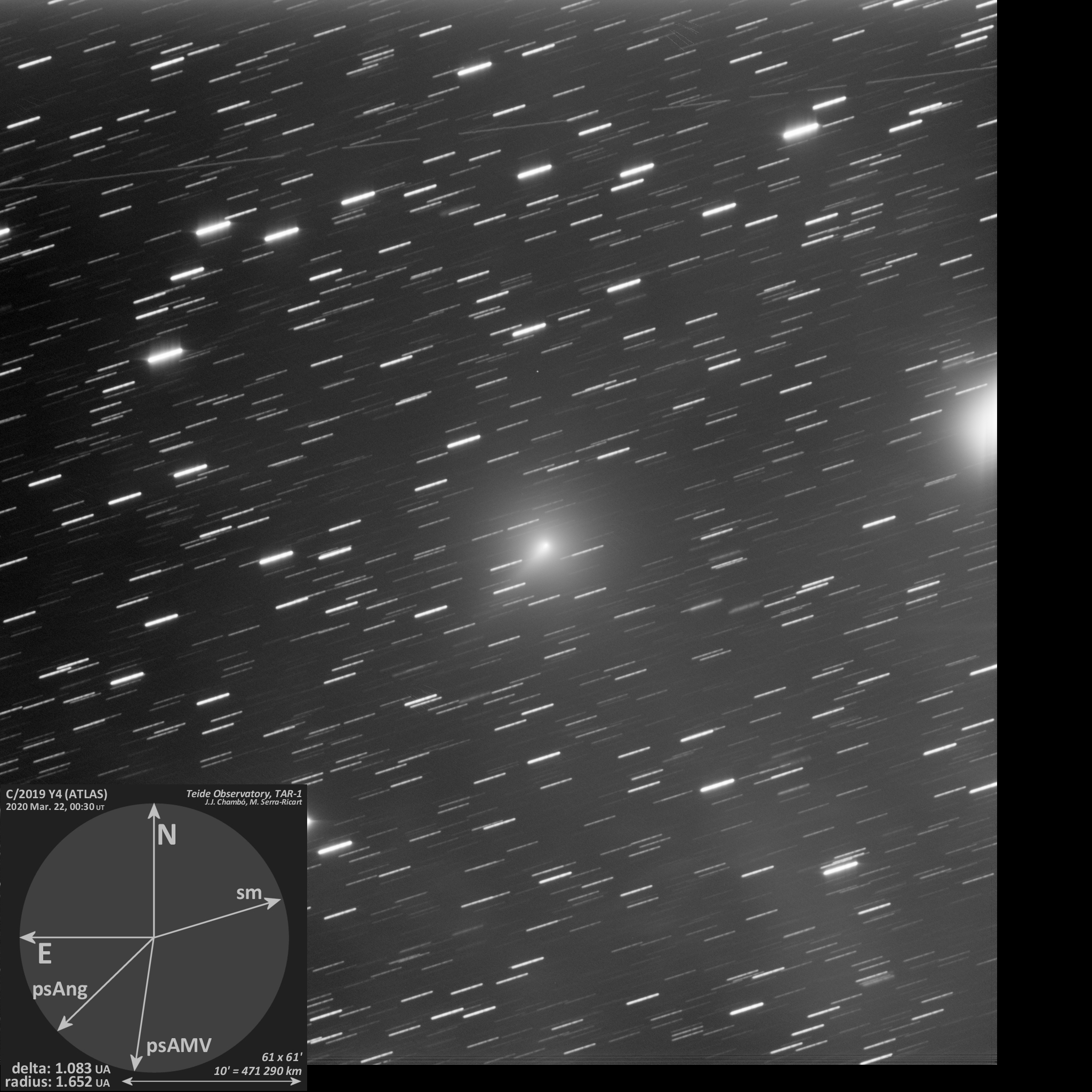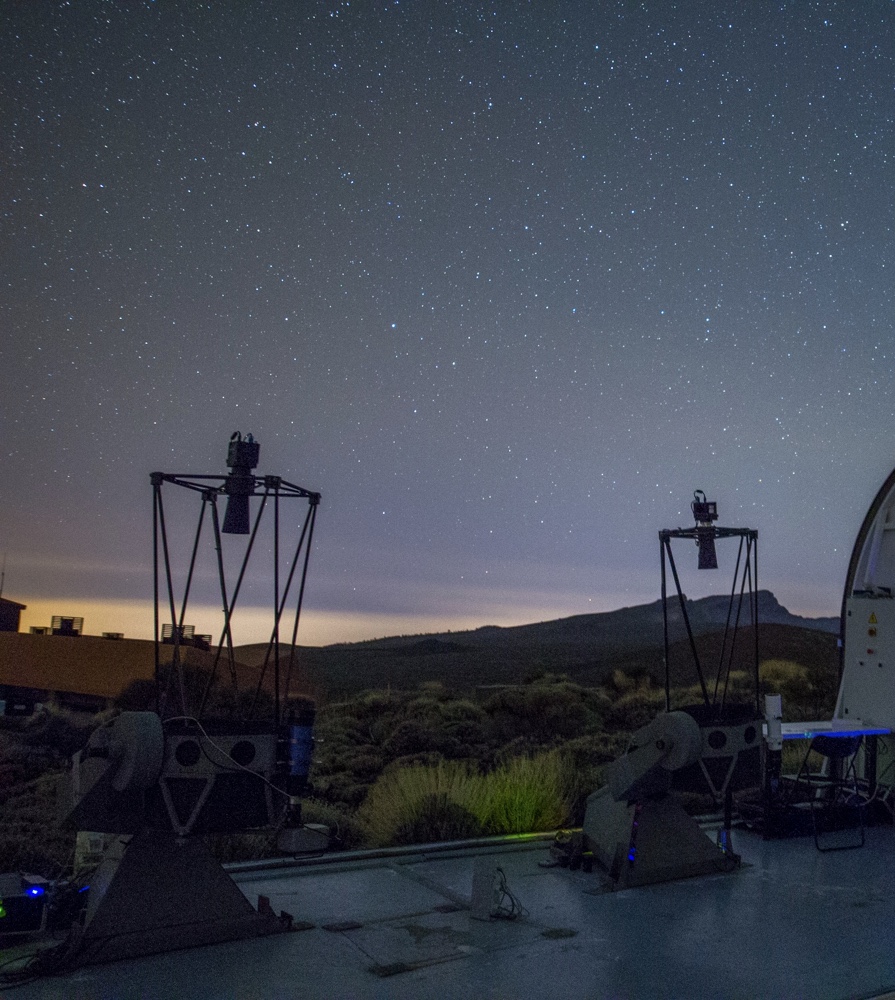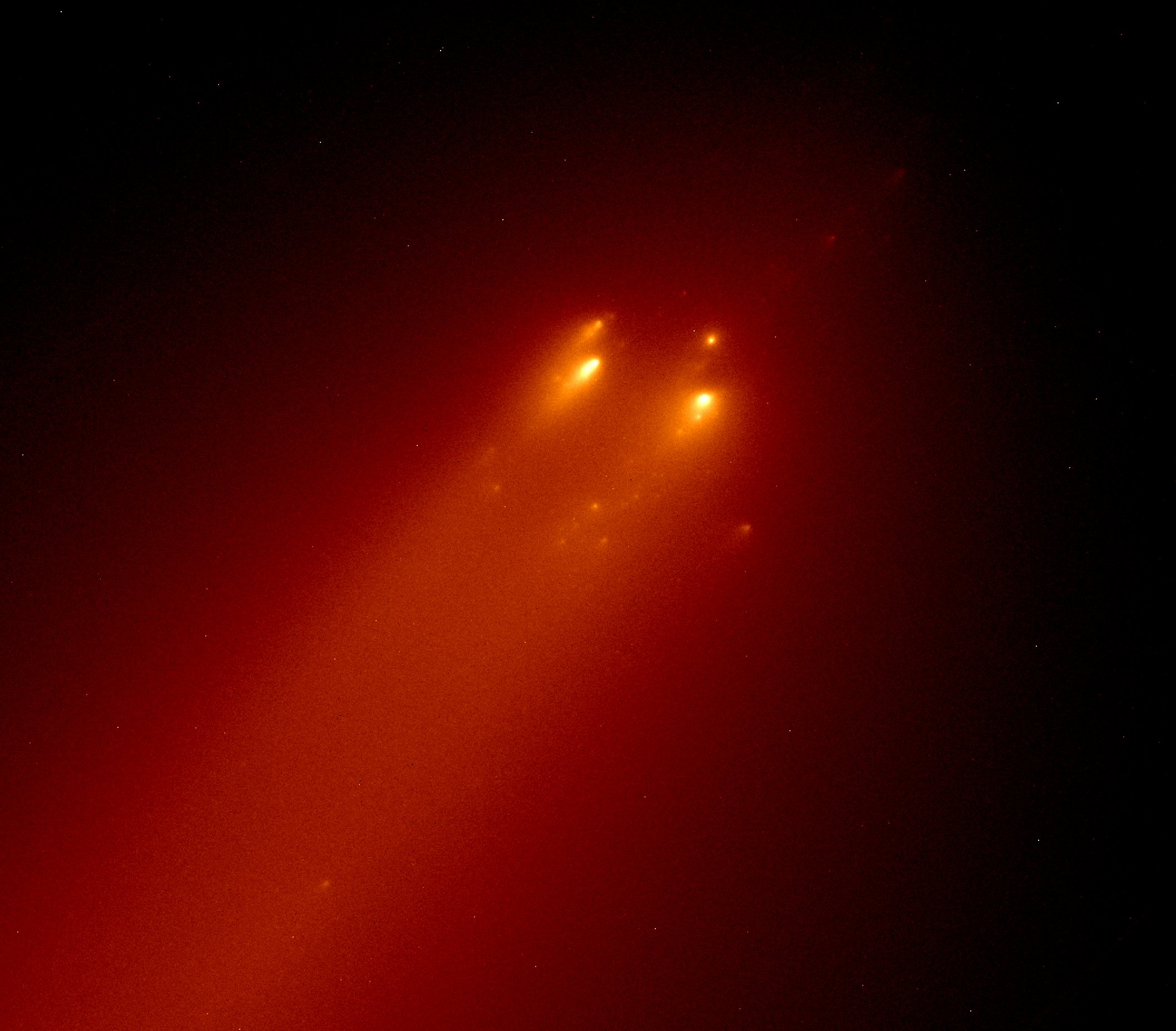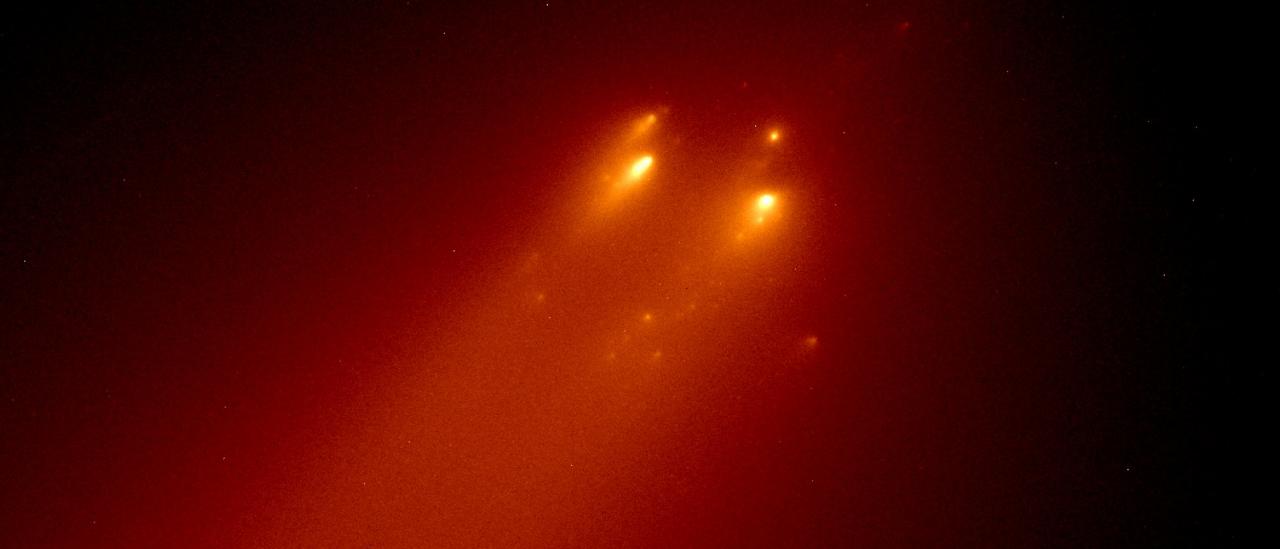Translated by John Beckman.
On December 28th one of the telescopes of the ATLAS (Asteroid Terrestrial-Impact Last Alert System) program, situated in Hawaii, discovered the comet C/2019 Y4 (ATLAS). It was a faint, diffuse comet, of magnitude 19 which at first did not stand out among the fifty or so objects of its class which are discovered per year.
Comets are small bodies a few kilometres in diameter , which surround the Solar System in their millions, in a thick sphere between 10,000 and 50,000 astronomical units* (AU) from the Sun: the Oort Cloud. The comets are the bits left over from the formation of the Solar System, and contain its original material in a pristine state, in the icebox of outer space, without being changed by the processes going on close to the Sun.
Gravitational tides in the Galaxy, and the pull of nearby stars perturb the orbits of these small objects, and a few break away from the Oort Cloud in parabolic orbits which take them to towards the Sun in thousands of years.

As it makes its final approach to the inner Solar System the gravity of the major planets can alter the orbits of the comets sufficiently to make them hyperbolic, so they leave the Solar System for ever, or elliptical, turning them into periodic comets.
After obtaining sufficient observations of comet C/2019 Y4 (ATLAS) its orbit could be computed and because it was so similar it was identified as a fragment of the Great Comet C/1844 Y1 which reached magnitude 2 and had a tail of up to 15 degree long, observable with the naked eye in the evenings of the first days of January 1845. The fragmentation of the “parent comet” could have occurred 4,000 years earlier, according to the re-calculated orbit of C/1844 Y1.
Since the beginning of 2020 interest in comet C/2019 Y4 (ATLAS) was growing rapidly as it increased in brightness, which by the beginning of March had reached magnitude 8 and it was visible with even quite small instruments, If it had continued in a similar way it could have been observable with the naked eye by the middle of May, before its perihelion, when the comet was going to be well within the orbit of Mercury, reaching only 0.25 AU from the ´sun.
One of the projects involving the telescopes TAR (Remote Open Telescope, initials in Spanish), in the Teide Observatory (IAC) is to follow the evolution of the morphology of comets. And the comet C/2019 Y4 (ATLAS) was one, on which this project had fixed its attention.

Taking advantage of the two 0.5m wide field telescopes with Super-CNOS cameras with the latest technology, images were taken of the coma, the atmosphere which surrounds the nucleus of the comet, which reached a size of some 500,000 km, as well as details of its central condensation, from which a narrow ionized tail stuck out.
In mid-March, the comet slowed down its rapid increase in brightness, which is usual for this type of very long period comet, reducing its gaseous emission activity in its final approach. Just then, Covid-19 forced the closure of professional facilities around the world, but fortunately the community of amateur astronomers was able to continue observing the comet during the following days, detecting in their images that the comet's nucleus had begun to fragment.

Disintegration is one of the final destinations of many comets, made up of loosely bound blocks of material with highly volatile content and bound by the microgravity inherent in their small size. At each approach to the Sun, their structure weakens due to the sublimation of the gases -mainly water- contained, which in turn entrains solids, and to the tidal forces caused by the powerful gravity of the Sun. The most beautiful consequence of all this process is the formation of the long tails that most comets display.
During the second fortnight in March various observers could follow how the fragments of comet ATLAS began to separate and to split up into smaller fragments. The Hubble Space Telescope observed them in detail on April 20th and 23rd. And the most recent studies of the morphology and the evolution of the fragments, moving parallel and not like a “train of fragments” show that probably the fragmentation occurred at a large distance from the Sun, and not during the time of mínimum distance.

But in any case, the fragments of C/2019 Y4 (ATLAS), behaving just as those of any comet which is disintegrating, continued on the same orbit as the original object, and their separation was barely a few thousand kilometres. None of them changed their trajectory significantly, and they are not in any way dangerous, as their closests approach to the Earth will occur on May 23rd 2020 at 0.78 AU from us, which is 117 million kilometres.
At the beginning of May at least the two major fragments could still be observed. It seems that they will reach perihelio non May 31st, but their brightness will be much less than that hoped for.
*An Astronomical Unit (AU) is the mean distance between the Earth and the Sun, 150 million kilometres, approximately.
José J. Chambó Bris (https://cometografia.es)
Miquel Serra-Ricart (Administrator of the Teide Observatory and Astronomer at the IAC).

